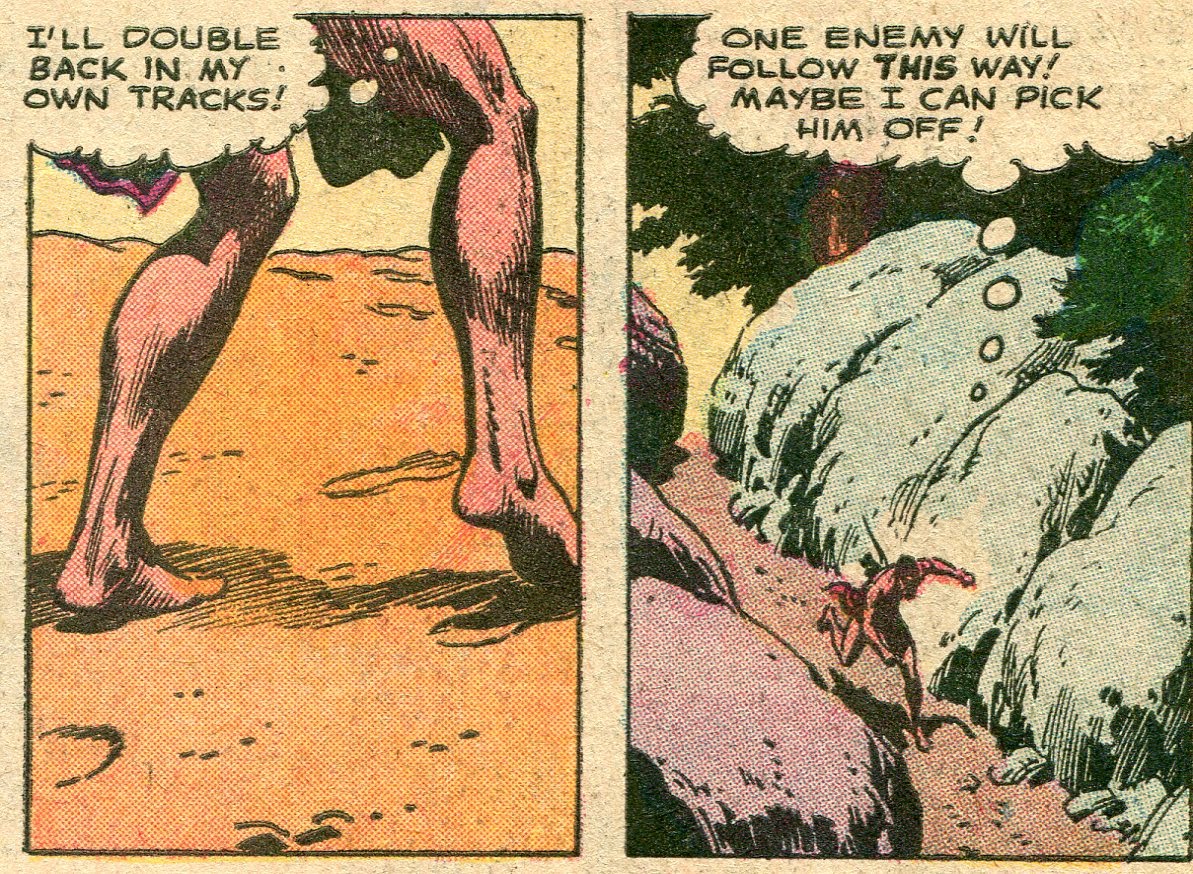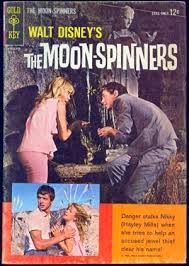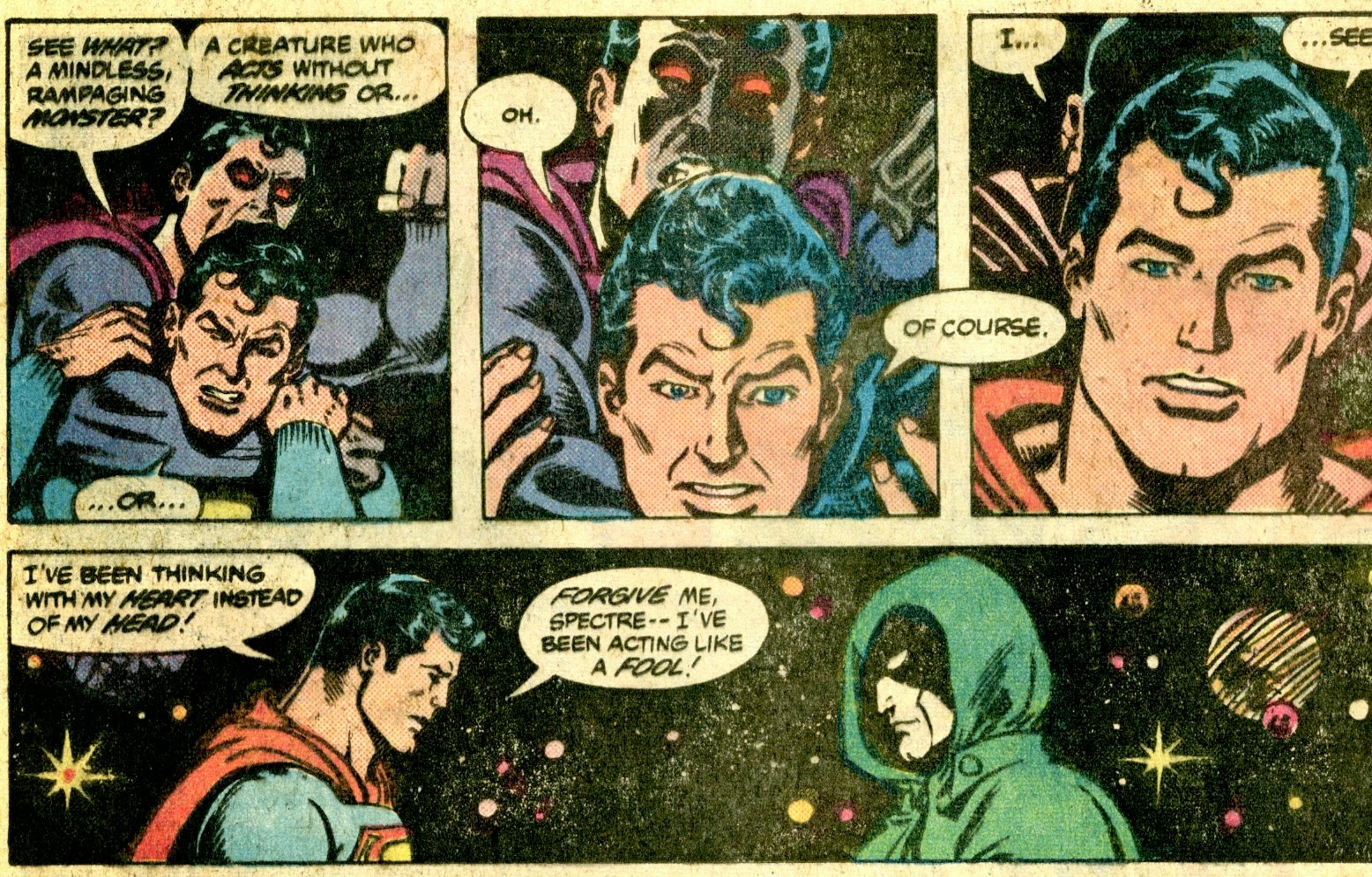Read/Watch 'em in Order #48
By 1940, there were truck-loads of heroes running around the pulp magazines, fighting crime and saving the world on a regular basis. But though some of those heroes had science fiction trappings, few of them lived in a pure science fiction world.
Mort Weisinger--he who would one day rule over Superman at DC Comics--filled this hole when he created Captain Future. Initially set in the far-future year of 1990, when the entire Solar System had been colonized and all nine planets (yes, PLUTO was still a planet! Take that, real-life scientists!) were found to support life. It's during this time that Curt Newton is orphaned while still a baby and gets raised inside a hidden base on the Moon by a disembodied brain, a robot and a shape-changing android.
As an adult, Curt turns out to be surprisingly well-adjusted. He's a brilliant scientist and in perfect physical shape, so naturally, with his surrogate family as his assistants, he fights evil throughout the Solar System in the guise of Captain Future.
It's not really a secret identity, since everyone knows who he really is. But its easy to be forgiving of this--Captain Future is a pretty cool name. And if you are the smartest guy in all of space with a robot, an android and a disembodied brain for sidekicks, then you can darn well call yourself anything you please.
It's pretty obvious that Weisinger was unashamedly lifting ideas from Doc Savage. Clark Savage and Curt Newton parallel each other in a number of ways--raised by scientists and trained to physical perfection; dedicating their skills to battling evil; heck, Grag the Robot and Otho the Android even bicker with each other in the same manner Doc's friends Monk and Ham fight.
But the science fiction setting still gives Captain Future a unique feel. Besides, Weisinger made the wise choice of getting
Edmond Hamilton to write the series.
Hamilton was the perfect choice. He created an internally consistent vision of our Solar System that might have little to do with scientific reality (even by 1940 standards), but by golly it's a fun place that is wildly imaginative and allows for a true sense of wonder.
When we first meet Captain Future and his gang, they've already built up quite a reputation for saving mankind. There are nifty references scattered throughout this first story to previous adventures--an "atomic trap" they avoided on Neptune; Curt being tied to a rock on the hot side of Mercury; and a conflict with "Mind Men" on one of Saturn's moons. It makes me wonder if Hamilton was borrowing a trick from Arthur Conan Doyle--who would often drop in intriguing references to cases Sherlock Holmes had worked in the past ("the giant rat of Sumatra!").
The first Captain Future tale is "Captain Future and the Space Emperor," published in the premier issue of the good captain's own magazine. (Winter 1940) This would run for 17 issues before being cancelled in 1944. Captain Future stories, though, would continue to appear in
Startling Stories magazine until 1951.
The Space Emperor is causing trouble on Jupiter. And, yes, Jupiter is inhabited. Go deep enough into the atmosphere and it becomes breathable, with land masses heated by internal radiation. Humans have to wear "gravitation equalizers" while on the planet, where they now co-exist with native Jovians (a squat green-skinned race with flipper-like hands and feet).
But Human/Jovian relations are a bit strained. First, a strange plague of atavism--humans reverting first into ape-like beasts and eventually into reptiles--is raging across the planet. The Space Emperor claims to be the "Living Ancient," a member of a highly advanced civilization that lived on Jupiter centuries ago. He's gotten many of the Jovians to worship him and he's convinced the natives that the humans are cursed and must be wiped out. This will leave him effectively in charge of the whole planet.
Captain Future is asked to look into this. He encounters the Space Emperor several times during the adventure, but quite literally has a hard time putting a hand on him..Though the villain's real identity is certainly a human being, he does have access to ancient Jovian technology. This is both the source of the atavism plague AND a device that renders him incorporeal, making it impossible to touch him or shoot him. It also makes getting away easy, as he can walk through solid rock or even dive into the ground. He also wears a suit that both hides his face and allows him to breath even when immaterial.
All this makes for a fun story that combines elements of several genres. There's the overt science fiction stuff, of course, but there's also a mystery to be solved in deducing the bad guy's real identity. And Jupiter is essentially a Frontier world that is analogous to the Old West, with the Jovians representing Indians. There's even a grizzled tough-guy marshal keeping the peace in a remote Jovian town.
Hamilton makes good use of all the characters. While the good guys gather clues and avoid death traps, each of Curt's sidekicks gets a moment in the sun. Otho uses his shape changing abilities to mingle with the Jovians and gather some vital information. Grag joins Captain Future on an expedition that includes following a lava flow into a giant cavern, where the robot's strength and the fact that he doesn't need to breath allows him to save a few lives. Simon Wright (a scientist who is now a brain in a case after disease wrecks his body) develops a cure of the atavism.
Hamilton was a wonderful storyteller, able to introduce fantastic elements into his stories and then follow the ensuing consequences to their logical conclusions. Despite the deliberate analogy to the Old West, Hamilton creates a truly alien world with his version of Jupiter. This is highlighted by an exciting set piece in which Curt and Planet Police agent Joan Randell run into some dangerous fauna, as well as by passages such as this:
"The jungle was weird tonight! The drenching radiance of the four moons made it a fantastic fairyland of deep black shadows and dappled silver light. High overhead stretched the great tree-ferns' masses of feathery fronds, tipped with spore-pods. Gleaming bright in the moons towered the metallic copper-trees. The blindly swaying snake-vines hung like dark pendulous serpents from the branches."
There are passing references to tree-octopuses, balloon-beasts, stun-flowers and a giant ocean of lava big enough to swallow the Earth--all reminding us that this is an alien world full of bizarre dangers.
Captain Future gets off to a great start with this story. When he wraps up the case, he and his friends return to his secret base on the moon to await their next mission. Joan Randall and Ezra Gurney (the aforementioned grizzled marshal) are left behind, but they'll both be turning up again as well. The Solar System according the Captain Future is a dangerous place, so there's always plenty of heroic deeds that need to be done. We'll be looking at the next four Captain Future novels as part of the "In Order" series before moving on to something else.



.jpg)








































